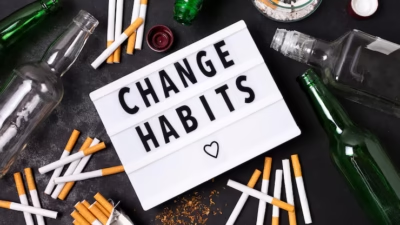The conversation around addiction often gets simplified into grit and determination, as though willpower alone could carry someone through recovery. In reality, building a sustainable path forward looks nothing like a single decision to quit. It’s more like an ongoing negotiation between body, mind, environment, and support systems. People who move through it successfully tend to have a web of strategies, resources, and connections that shift as their needs change. The good news is that recovery is not just possible, it’s being redefined every day in ways that make it more supportive, inclusive, and adaptable to real life.
The Power Of A Personalized Plan
Treatment used to be painted with one brush. A program would set its rules, and people either made themselves fit or they didn’t. That rigidity left too many slipping through the cracks. Today, recovery is leaning into personalization. What works for one person may not work for the next, and providers are finally making space for that reality.
For some, medication-assisted treatment stabilizes brain chemistry so that other forms of therapy can actually take root. For others, a holistic approach involving nutrition, exercise, and mindfulness proves to be the missing link. Counseling and group support remain cornerstones, but now they’re often paired with digital tools that let people check in daily without being tied to an office. The shift toward tailoring plans has taken recovery out of the narrow lane it once occupied and widened it to meet people where they really are.
This flexibility matters. Recovery doesn’t look like a straight road. It bends, sometimes doubles back, and often demands patience. Having a plan that adapts rather than punishes someone for needing a different pace or method creates space for resilience.
Reframing Women And Addiction
Addiction touches everyone, but the experiences and pressures shaping how women move through it can be different. Cultural expectations often put women in the position of caregivers, which complicates how they seek help. Many delay treatment because they feel responsible for children, partners, or even aging parents. Stigma can weigh heavily, especially in communities where judgment around substance use still overshadows the conversation about health and recovery.
Research shows women may progress from casual use to dependency faster than men due to differences in physiology and hormones. They can also experience stronger cravings and more intense withdrawal symptoms. Recognizing these nuances is essential, not to separate genders into neat categories, but to acknowledge that women and addiction can’t be addressed through one-size-fits-all methods.
Programs that consider childcare needs, provide trauma-informed care, and create safe spaces where vulnerability doesn’t carry extra cost are reshaping what effective treatment looks like. By widening the lens, recovery efforts become not just more compassionate but more effective. When support matches lived realities, healing has room to take root.
Community As A Lifeline
Recovery may feel like an intensely personal battle, but it rarely succeeds in isolation. The weight of accountability, encouragement, and solidarity that comes from community can’t be overstated. Whether it’s a traditional 12-step group, a modern online peer network, or smaller circles of trust among friends and family, having people who understand the stakes creates resilience.
Communities can also provide something subtler: belonging. Addiction often isolates, both physically and emotionally, leaving people convinced they’re alone in their struggle. Finding a place where stories overlap, where others nod in recognition rather than recoil in judgment, dismantles that isolation. In those spaces, setbacks aren’t seen as failures but as part of the process. That shared understanding makes it possible to keep moving even when the path feels heavy.
What’s evolving now is how community is defined. It’s no longer confined to church basements or meeting halls. Virtual communities let people connect across time zones, while local nonprofits build support networks that emphasize cultural and regional identity. This diversity of options ensures that no one has to force themselves into a mold that doesn’t fit.
Access And The Role Of Place
The best plan and the strongest willpower won’t help much if access is missing. Geographic location, financial means, and insurance coverage still dictate who gets help and how quickly. Some urban centers have abundant programs, while rural communities may have just one provider hours away. Cost remains another barrier, especially for those who fall in the gap between qualifying for subsidies and being able to comfortably pay out of pocket.
Still, improvements are surfacing. Telehealth has expanded reach dramatically, allowing people in small towns to meet with specialists without long drives or extended time off work. States are experimenting with new funding models to broaden availability, and private programs are starting to offer sliding scales and payment options that reflect economic reality.
No matter where someone is located—whether they’re looking for drug rehab in Fort Worth, D.C. or anywhere in between, finding the right fit is essential. That phrase isn’t just a logistical truth. Fit determines whether a person feels supported rather than shuffled through a system. When treatment aligns with personal circumstances and values, it moves from being a hurdle to a lifeline.
Recovery As An Ongoing Practice
One of the biggest shifts in how we talk about recovery is the recognition that it doesn’t end with the completion of a program. Long-term health requires ongoing maintenance, and framing recovery as a continuing practice makes setbacks less discouraging. It’s not about crossing a finish line but about sustaining balance in daily life.
This perspective has given rise to aftercare programs, sober living communities, alumni networks, and check-in apps that extend support beyond the initial treatment window. It also reframes relapse, not as proof of failure, but as a reminder that more support or different strategies are needed. That outlook preserves dignity and makes it easier to re-engage with care rather than give up altogether.
Viewing recovery as a practice also underscores the importance of building a life filled with purpose. Pursuing education, returning to work, nurturing creative outlets, or strengthening family connections all become part of the equation. When recovery is tied to a fuller life, it has a sturdier foundation.
Looking Ahead With Optimism
The narrative around addiction and recovery is still changing, but it’s leaning toward compassion, flexibility, and innovation. Barriers remain, from funding shortfalls to lingering stigma, yet the progress already visible is encouraging. Treatment is more adaptable, science is deepening our understanding, and communities are redefining how they show up for one another.
Hope isn’t a vague idea in this context—it’s a lived reality for people who find new footing each day. The future of recovery looks less like rigid programs and more like a spectrum of supports that bend to real human needs. It’s a story not of perfect solutions but of expanding opportunities, and that expansion makes all the difference.
Recovery isn’t about a single turning point. It’s built from countless small decisions, from reaching out when silence feels easier to trying again when progress stumbles. Each of those choices builds momentum, and together they form a path forward that’s not only possible but promising.


![7 Must-Have Digital Tools for Physical Therapy Practices [2025 Guide] 3 Physical Therapy Practices](https://divingdaily.com/wp-content/uploads/2025/10/Physical-Therapy-Practices-400x225.jpg)